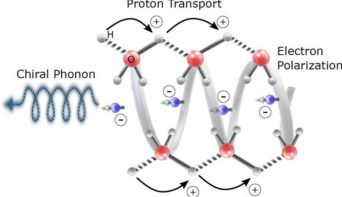
A DNA nanorobot programmed to transport blood-coagulating proteins specifically into tumours so that their blood supply is blocked could make for a promising new cancer therapeutic. The new system, which literally “starves” the tumour, only destroys cancer cells and not surrounding tissue. It has been shown to work on breast, lung, melanoma and ovarian tumours in mice and Bama miniature pigs.
“Our system is ‘intelligent’ and works using a ‘seek-and-destroy’ strategy,” explains team member Baoquan Ding of the National Center for Nanoscience and Technology in China.” “We demonstrate that the nanorobot can deliver biochemical moieties that do not work as therapeutics in the conventional sense but do so indirectly – in this case by blocking the blood supply of the tumour and so killing it.”
Ding and colleagues made their nanobot, which is hollow and tube-shaped, using the DNA origami technique, which is now widely used to fabricate various 3D nanostructure whose size and shape can be controlled. It only takes a few hours to make the bots through DNA-based molecular recognition and self-assembly, say the researchers. The devices are 90 nm long with a diameter of around 19 nm.
Molecular trigger to mechanically open the bot
“We functionalize the nanorobot on the outside with fastener strands containing a DNA aptamer that binds nucleolin, a protein specifically expressed in tumour-associated endothelial cells, and the blood-clotting enzyme thrombin in its inner cavity,” Ding tells nanotechweb.org. “The nucleolin serves a molecular trigger to mechanically open the bot, which releases the thrombin. This then activates blood coagulation at the tumour site, causing a clot and cutting off its blood supply.”
The researchers tested out their devices by injecting them into mice and miniature pigs bearing grafts of various human cancer cells. They found that they travel through the bloodstream “searching” for tumours thanks to the integrated DNA aptamers. The devices also proved safe and did not produce immunological reactions in these animals.
Unique strategy for cancer therapy
“We believe that our technique is a unique strategy for cancer therapy,” says team member Guangjun Nie. “What is more, the DNA nanobot we have developed could be further modified to load different cargoes and targeting groups to indeed treat other diseases since it is a customized and customizable system.”
The team, reporting its work in Nature Biotechnology doi:10.1038/nbt.4071, says that it would now like to test out its technique in larger animals and primates and hopes to finish these preclinical studies in one or two years.



